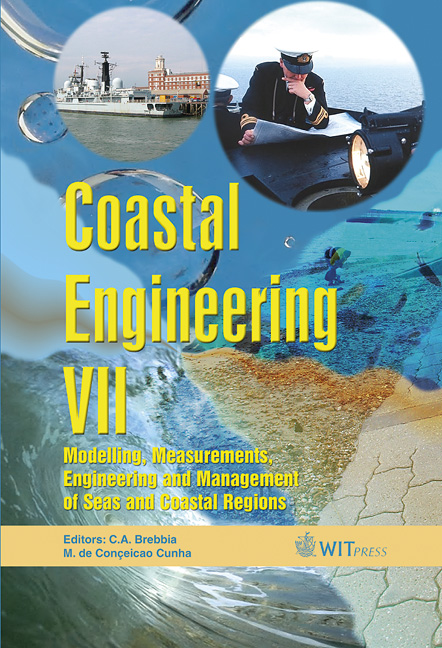A Review Of Statistical Methods Of Analysis Applied To The Wave Climate In The Area Of The Agulhas Bank In The Southern Indian Ocean
Price
Free (open access)
Transaction
Volume
78
Pages
10
Published
2005
Size
2,988 kb
Paper DOI
10.2495/CE050201
Copyright
WIT Press
Author(s)
K. R. MacHutchon
Abstract
A Wave Climate is normally defined in terms of (i) significant wave heights (Hs or Hm0), (ii) zero crossing, significant, mean or spectral peak wave periods (Tz, Ts, Tm or Tp respectively), (iii) wave directions, and (iv) joint frequencies of Hs or Hm0 and T. Wave climate data is statistically analysed to derive extreme values and design wave data for specified probabilities of exceedance or return periods. This paper reviews the application of different methods of statistical analysis to the Southern Indian Ocean Area on the edge of the Agulhas Bank, using a data bank comprising wave data recordings, which were collected over a six-year period, from January 1998 to December 2003, on the Mossgas FA offshore gas drilling platform, on the Agulhas Bank in the Southern Indian Ocean. Different samples from the data bank have been analysed in the paper and the results of these analyses have been extrapolated to derive extreme wave height estimates. The paper has taken cognisance of the previous work, which has been carried out in the same area by J. Rossouw and M. Rossouw [5, 8, 9]. 1 Introduction It is interesting to consider that the sea can have a very calming influence on one, even although its surface is never completely still itself. On the contrary, the sea surface is a continuously and chaotically moving medium which often vents its awesome energy, on a random basis, on sea shores and shoreline protection structures, on ships at sea, and on offshore structures.
Keywords





